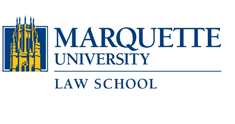Abstract
Supreme Court Justices exercise wide discretion when hiring law clerks. The Justices are constrained only by the pool of qualified applicants and by norms of the institution, such as that beginning with Chief Justice Burger’s tenure in 1969 90% of clerks have previously served a clerkship with a federal judge. Previous work finds that ideology structures hiring decisions at the individual clerk level; however, these analyses fail to account for the fact that a Justice hires several clerks each Term—he seeks a winning team, not just a single all-star. Hiring decisions are structuring decisions in which one of a Justice’s goals is to assemble a team of clerks that provides him with information to aid in decision making. I analyze ideological characteristics of the teams the Justices assembled from 1969–2007 and find that they frequently hire clerks with different preferences than their own. This analysis has implications for the information clerks convey to their Justice and suggests that existing principal–agent models used to explain the Justice– clerk relationship may be incomplete.
Repository Citation
Christopher D. Kromphardt,
Fielding an Excellent Team: Law Clerk Selection and Chambers Structure at the U.S. Supreme Court,
98 Marq. L. Rev. 289
(2014).
Available at: https://scholarship.law.marquette.edu/mulr/vol98/iss1/14
